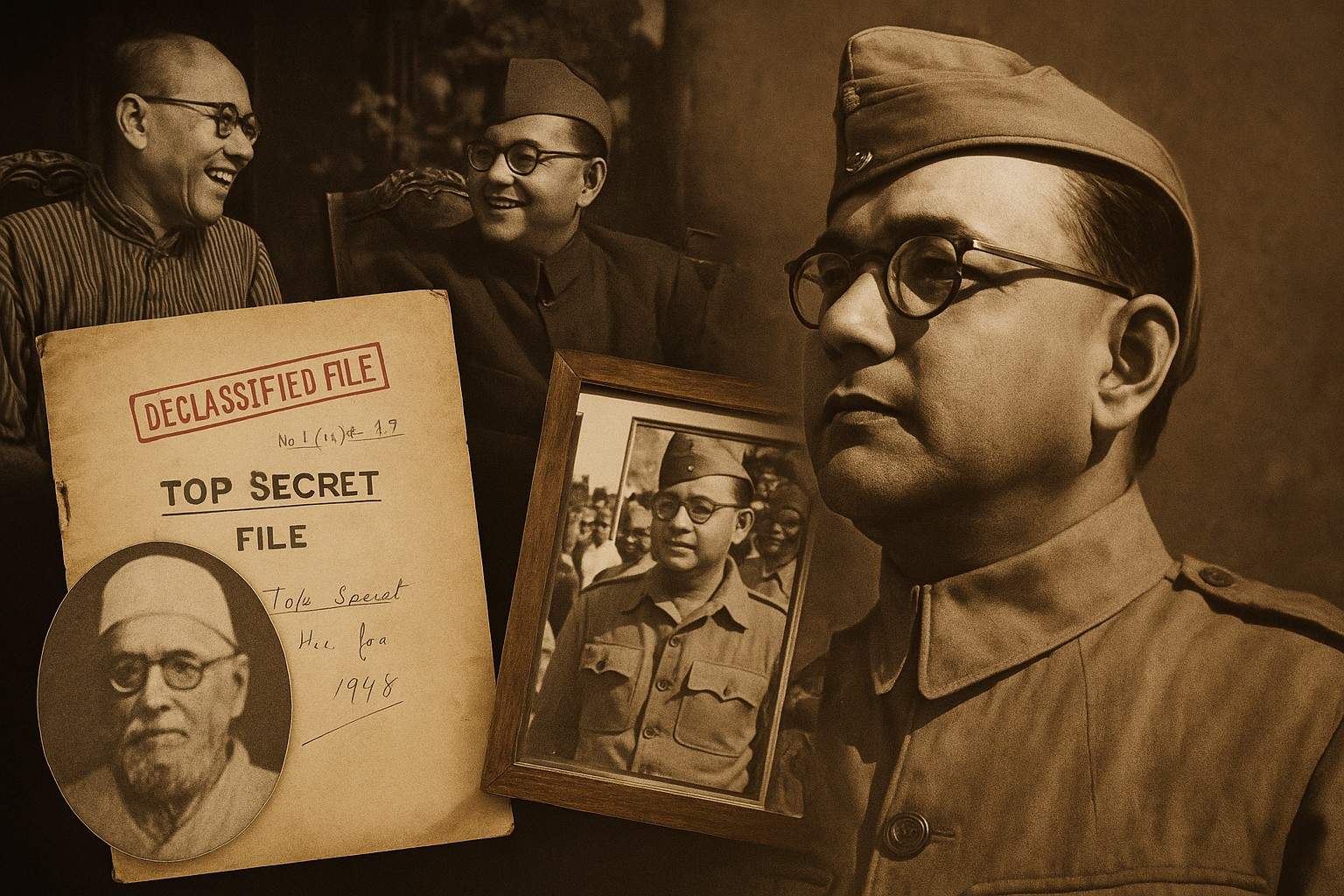Introduction
Subhas Chandra Bose—fondly known as Netaji—remains one of the most enigmatic figures in India’s independence movement. Though the official narrative claims he died in a plane crash in Taiwan on August 18, 1945, a growing body of evidence disputes this account. Particularly intriguing is the possibility that Vietnam, specifically Ho Chi Minh City (formerly Saigon), may hold key archival material capable of resolving this historic mystery.
The Vietnamese archives, eyewitness testimonies, and declassified Indian government files all suggest that Netaji may have survived beyond 1945. Despite this, successive Indian governments have shown little inclination to explore these promising leads.
This article explores the potential of Vietnamese archival records, historical evidence, and citizen-led movements to bring clarity to Netaji’s fate.
The Potential of Vietnamese Archives
A 1994 article in The Telegraph titled “Vietnam Archives Hold Key to Netaji Flight” by Prabha Jagannathan reported that the Revolutionary Museum in Ho Chi Minh City held significant documentation related to Japanese military operations during World War II, possibly including records of Bose’s movements in Southeast Asia [Jagannathan, 1994].
The article emphasized that despite this, the Indian government had not pursued efforts to investigate these materials. Historian and Member of Parliament Chitta Basu criticized this inaction, urging that “the most important thing is to look beyond conventional sources” [Jagannathan, 1994].
Bose’s Final Journey and the Taiwan Crash Theory
In 1943, Bose took command of the Indian National Army (INA) and declared the establishment of the Provisional Government of Free India in Singapore. His last known official movement was boarding a Japanese aircraft on August 17, 1945, which was said to have crashed in Taiwan the following day.
However, this version of events has long been contested. Multiple commissions of inquiry, including the Justice Mukherjee Commission of Inquiry (1999–2005), found no conclusive proof of Bose’s death in the crash. The commission, in fact, declared that the story of his death was untrue [Government of India, 2006].
Eyewitness Accounts Contradicting the Crash Theory
Numerous testimonies from credible individuals suggest that Netaji may have been alive long after 1945:
- Alfred Wagg, a war correspondent for the Chicago Tribune, reportedly saw Bose in Saigon in late 1945, postdating the alleged plane crash [Mission Netaji, 2016].
- Prem Bhatia, an eminent journalist and former High Commissioner of India to Singapore, filed an affidavit before the Khosla Commission, citing Balraj Trikha, who claimed to have seen Bose at Saigon Airport in 1971 [Mission Netaji, 2016].
- Other reports cite Bose sightings in France during the late 1960s, though these remain anecdotal and require further investigation.
The Secret Meeting in Vietnam: August 19, 1945
A compelling theory suggests that Bose met Vietnamese revolutionary Ho Chi Minh and Chinese General Liu Po Cheng on August 19, 1945—a day after the plane crash supposedly occurred. This claim was first highlighted by Mission Netaji and is believed to have originated from declassified Vietnamese wartime intelligence records [Sayantan Dasgupta, Indiatimes, 2016].
If this meeting occurred, it would dismantle the official account and signal a broader geopolitical strategy involving Bose, Vietnamese, and Chinese revolutionaries.
Photographic and Archival Evidence
- A photograph discovered in the War Remnants Museum in Ho Chi Minh City depicts a figure with a close resemblance to Bose. The individual’s identity remains unconfirmed, as Vietnamese authorities have declined to comment [Dasgupta, 2016].
- Another photograph from the Paris Peace Conference is frequently circulated online, alleging Bose’s presence in disguise. While this remains speculative, facial recognition experts and historians have called for more thorough forensic analysis.
Declassified Indian Files and Shocking Revelations
The declassification of Netaji files by the Government of India and the Government of West Bengal has provided shocking revelations:
- The plane crash theory has been unofficially discredited. A West Bengal Government file notes that important records were destroyed in the 1960s and 1970s, including documentation related to memorial proposals and repatriation of Bose’s ashes [GoI Files, 2015].
- Surveillance records show that Netaji’s family was spied on for over two decades after Indian independence—an act widely criticized as undemocratic and unjust [GoI Files, 2015].
- A letter, allegedly written by Jawaharlal Nehru to Clement Attlee, described Bose as a “war criminal” and stated that Stalin had allowed Bose to enter Soviet territory. This unsigned letter has been cited in several publications and calls into question Nehru’s stance on Bose [Mukherjee, P.D., 1978].
- P.D. Mukherjee, a member of the Planning Commission, claimed Bose was held in Soviet custody till the early 1960s. His friend Satyanarayan Sinha reportedly decrypted coded messages indicating Bose was alive until shortly before Nehru’s death in 1964.
Other Theories: Russia, China, and the Gumnami Baba Identity
The Vietnamese theory is just one part of a larger, multi-nation web of speculations:
1. The Russian Angle
There is considerable circumstantial evidence that Bose may have escaped to Russia, only to be imprisoned and possibly executed by Joseph Stalin. Some declassified Indian files make passing references to Bose’s possible entry into Soviet territory.
2. The Chinese Connection
Some West Bengal government documents hint at Bose’s presence in Manchuria, China, around 1948. A surveillance report from the same year cites Bose as being “alive and somewhere in Manchuria” [Declassified Files, 1948].
3. The Gumnami Baba Theory
One of the most persistent theories claims that Gumnami Baba, a reclusive figure in Faizabad, was Netaji living in disguise. Handwriting analysis, possession of INA relics, and testimonials have bolstered this theory, although it remains unproven [Mukherjee Commission, 2005].
The Role of Mission Netaji and Public Pressure
Mission Netaji, a citizen-led initiative, has played a crucial role in uncovering new evidence, pressuring the government to declassify documents, and disseminating information through social media platforms.
Activists such as Anuj Dhar and Chandra Kumar Bose (Netaji’s grand-nephew) have demanded that Prime Minister Narendra Modi write to the heads of Russia, China, Japan, the UK, and the USA to declassify any remaining Bose-related files in their possession [Mission Netaji, 2015].
Why the Truth Matters
The mystery of Netaji Subhas Chandra Bose is not merely a historical puzzle—it represents a deeper issue of accountability, transparency, and national identity. Understanding the truth behind Bose’s disappearance could correct historical inaccuracies, restore public trust, and honor one of India’s greatest freedom fighters.
In the words of Chandra Kumar Bose:
“If the foundation of our history is weak or distorted, the edifice of our national consciousness risks collapse.”
Conclusion: Time for Decisive Action
There is enough circumstantial and archival evidence to warrant a full-scale investigation into Vietnamese records. If Bose did indeed pass through or reside in Vietnam, those documents could finally lay to rest the controversy surrounding his fate.
The Indian government must prioritize diplomatic efforts to access Vietnamese wartime archives, involve international historical experts, and collaborate with citizen initiatives like Mission Netaji.
The time for hesitation is over. To honor Netaji’s legacy and educate future generations truthfully, India must uncover the final chapter in his story—wherever it may lie.
References
- Jagannathan, P. (1994). Vietnam Archives Hold Key to Netaji Flight. The Telegraph.
- Dasgupta, S. (2016). Evidence Shows Netaji Could Have Been Alive In Vietnam. Indiatimes.
- Government of India. (2006). Justice Mukherjee Commission of Inquiry Report.
- Mission Netaji (2015–2023). https://www.missionnetaji.org
- Declassified Files (2015–2020). Government of West Bengal & Prime Minister’s Office.
- Mukherjee, P.D. (1978). Internal memorandum cited in declassified files.
- Bose, Chandra Kumar. Public Statements and Social Media Updates, 2015–2023.
– Dr. Preenon Bagchi, Dean
Faculty of Engineering and Technology, Madhav University

